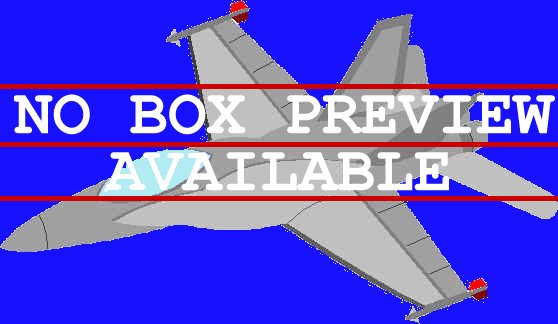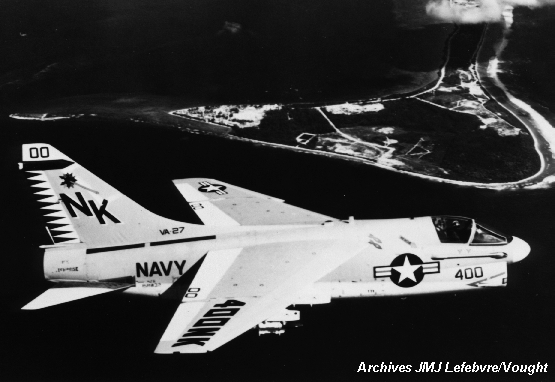
TESTORS 1:72 A-7E CORSAIR II

Reviewer: Myself (braithy@bigpond.com)
The Vought A-7 Corsair II is the thrid Vought Naval aircraft to carry the Corsair namesake, in spite of the "II" label, the other two of course being the famous F4U fighter and the light observation O3U biplane. The A-7 was a product of the Vietnam war and the special requirements brought about by the experience there. In 1963 the US Navy set out parameters for a new attack plane with superior range, weapons load and bombing accuracy to the then current, A-4 Skyhawk. They also stipulated the need for all-weather capability and that the new plane be developed from an existing design. Vought based the A-7 on the already proven and venerable F-8 Crusader design, although the Corsair was an entirely new plane. A couple of the distinictive differences were that the A-7 would not be able to fly at supersonic speed and also had its fuselage shortened. The A-7 proved to be popular with both pilots and ground crew when it first saw action in 1967 in Vietnam. The A-7E is the third generation production version for the US Navy.
This kit features very finely engraved panel lines that are nicely done in number but disappear easily after a coat or two of paint (especially those on the white undersurfaces). The instruction sheet is quite comprehensive (although I believe it may have been 'condensed' in later releases of this kit) set out in an 8 page A4 sized instruction booklet. It features a text running commentary on assembly (indicating when to bore out holes for instance) and Model Master paint call outs for individual parts as well as small feature diagrams showing correct alignment of wings etc. The kit recommends you choose which final version you want to produce before commencing assembly as these differ a little between each other.
The cockpit is nicely detailed - seat, stick, pedals, main and side instrument panels and rear bulkhead attached to a base with finely raised knobs on the panels. Decals are also supplied to place over the panels if this is preferred and the kit reccomends you scrape away the raised detail first. The instructions state to paint the cockpit in dark gull grey with olive seat cushions and black panels, and I followed this to the tee.
The fuselage halves are split vertically and are almost whole (ie: fin and nose are included) and this proved to be a poor fit. Some filler was required to help mask out the join lines plus a bit of sanding. The distinctive intake was then placed under the nose and the internal trunk extends a fair way back underneath the aircraft behind the cockpit. While I painted the interior white at the front, I added in grey then black further into the trunk to give it the appearance of 'darkening' into a void. Otherwise the rear wall would be quite discernible in spite of the length (something I tend to see as distasteful). The wheel wells have quite reasonable detail, with some representation of wires and hydraulics visible.
The wings went on very well, requiring no filler on my model, although the tailplanes were prone to be too upward slanting if one allowed to let the kit dictate the terms. Again the instructions do nicely in that they provide a running commentary on how best to logically cement the parts together, plus point out individual part painting recommendations. It's also good to see a kit pointing out the requirement to paint the anti-collision lights on an aircraft in this scale. The canopy can be positioned open and is nice and clear, a clear part acting as a HUD unit is also provided. The instructions recommend you leave off the antenna fairings (on the fin) if you are building one of the versions from the kit so as to allow you to conveniently place the fin decal first. I'd suggest the instructions be followed in this regard as this is the version I built and leaving the fairings off until after I applied the tail decals.
The undercarriage went on nicely and looks well replicated to scale. In wheels up mode the doors do not go on very well and some fiddly attention is called upon along with plenty of putty. The arrestor hook contains stripes and these can either be painted on or applied using a decal supplied in the kit. A refuelling probe is attached to the starboard side of the aircraft and only the single cannon is attached portside under the cockpit. Apart from two exhaust like ducts, there's nothing much of this kind supplied in the kit, although these are hard to replicate in this scale anyway. Weapon options is quite well catered for in this kit, with up to three pylons under each wing and one either side of the fuselage, to carry a variety of stores. Included in the kit are a pair of Shrike AGMs, Maverick AGMs, Sidewinder AAMs and 300 gal drop tanks. I chose to fit my version out to the max in line with the suggested configuration in the instructions.
You have the choice of reproducing two versions from this kit, an example from VA-192 "Golden Dragons" aboard USS Kittyhawk, Vietnam, 1971 or a VA-93 "Blue Blazers" example aboard USS Midway. Both versions are decked out with undersurfaces, trailing edge main wing flaps and tailplanes in Insignia White (FS17875) and uppersurface Gloss Gull Grey (FS16440). The version I chose was the Blue Blazers which featured a blue nose cone and sharks mouth behind the intake. The decals were thin and conformed to the surface well although carried a fair excess of carrier film.
Overall the kit does well in replicating the A-7E version and I don't have any real concerns about its accuracy. The upper fuselage aerials behind the cockpit, however, don't seem to be correct in number or position but everything else, including the fillet above the rear exhaust, seems to have been molded accurately. The kit had little problems in terms of fit, aside from the fuselage and undercarriage doors which posed problems, and went together nicely. I'd highly recommend it to all skill levels.
Related Reviews: Airfix 1/72 A-7E Corsair II
Back to home
Kit Review Index: 1/72
1/48

Vought A-7E Corsair II